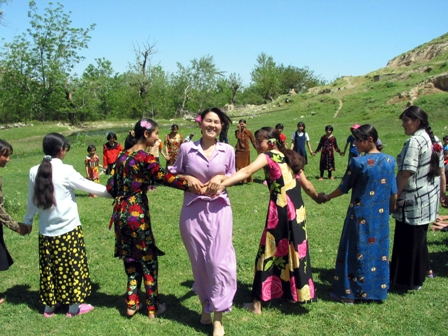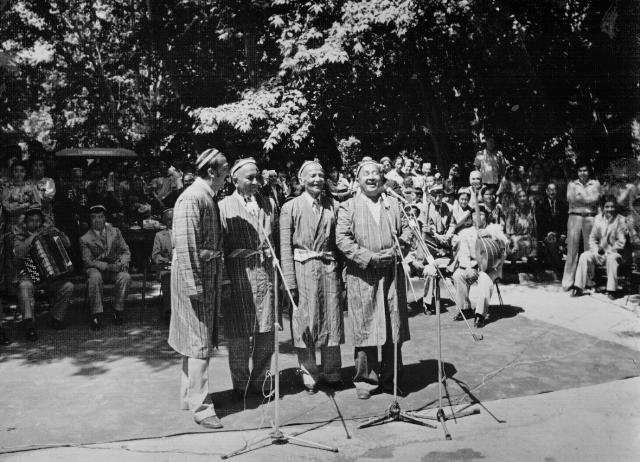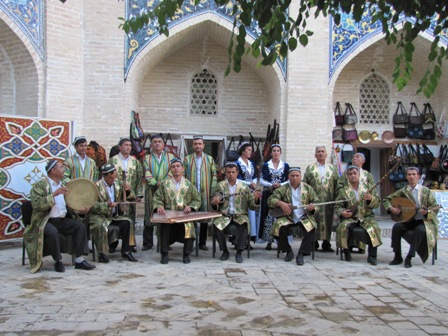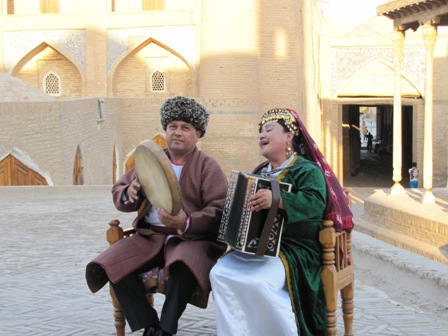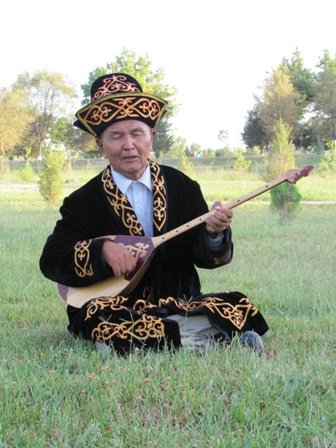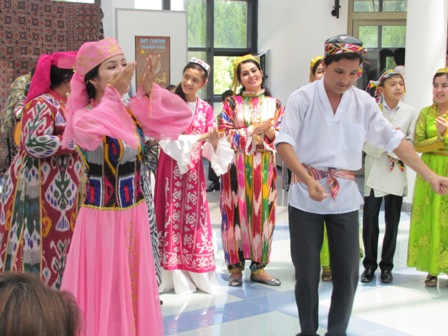Boychechak Marosimi (Snowdrop Festival)
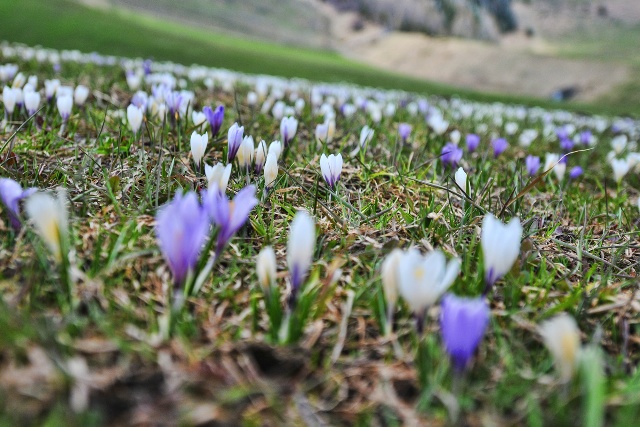
Domain: Social Practices, Rituals and Festive Events
Index Number: 03.02.03
Boychechak (snowdrop) festival represents a ceremony, which is conducted among the Turkic people after arrival of spring, after boychechak (snowdrop) blooms. It also represents a festival, which is organized on the occasion of blooming of the first flower. And it is Boychechak (snowdrop) festival which stands at origins of such festivals as "Lola sayli" ("Tulip festival"), "Gul sayli" ("Flower festival").
Analysis of the festival indicates that in the antiquity it embodied the struggle between winter and spring. Scholar and linguist Mahmud al-Kashgari, in his work called "Diwanu l-Lugat al-Turk", provides some small pieces of information about discussions held between winter and spring. And these pieces of information are noteworthy for two reasons. Firstly they testify to the fact that in the time of Mahmud al-Kashgari there were some ancient songs reflecting the beliefs about the struggle between winter and spring. Secondly, they demonstrate that they correspond to the song of Boychechak (snowdrop) festival.
Boychechak (snowdrop) festivals were organized in foothills, steppes and gardens. They were considered important in the life of the people. Therefore preparation for them was special as well. Indeed, preservation of word components in a relatively complete form, which is observed in this festival, acknowledges this fact.
Initially organized with participation of adults, boychechak (snowdrop) festival, later on acquired the form of children's folklore. In general, it is interesting to note that the traces of many forgotten festivals have been preserved in the form of children's folklore.
Boychechagim boyiron,
Gullar ichra ayiron,
Ayroningdan ichmayman,
Bahorimdan kechmayman.
My snowdrop you are rich,
You stand out among the flowers,
I will not drink your ayran,
Since I don't wish to give up my spring.
In this song, which is performed at Boychechak (snowdrop) festival, the performer's attitude to winter and spring is very clear. By driving away winter, he strives for spring.
When spring comes, the snowdrops, which just appeared, are hung on the branches of a willow tree. Then, the doll made of snowdrops is created, and relevant preparations for sacrifice are undertaken:
Boychechakni tutdilar,
Tut yoghochga osdilar.
Qilich bilan chopdilar,
Bakhmal bilan yopdilar.
Snowdrops were plucked,
And hung on the branches of a willow tree.
Then they were cut off with a sword,
And were covered with a velvet.
As a rule, children, carrying snowdrops, walked around houses by expelling winter from them. And the more solemn the ceremony was, the louder songs glorifying spring were performed, the faster winter left houses. It was believed that a snowdrop, which is a spring flower, brought joy, happiness and luck, abundance and grace to houses. The owners of houses, in their turn, gave presents to children, who brought snowdrops, and who by, expelling winter from houses, brought spring into them. To be happy by seeing snowdrops, passing them over one's eyes meant the triumph of spring and snowdrops, meant ending of winter and beginning of spring.
Nowadays boychechak (snowdrop) festival is predominantly preserved in the performance of children. They, by plucking snowdrops, visit houses, sing the song of "Boychechak" (much like the songs of Ramadan), and receive special presents.
It is important to mention, that the songs of "Ramadan", which are performed during the month of Ramadan, emerged based on "Boychechak" festival. Also, the ritual of "Ashadarozi", which can be observed in Khoresm, took another feature of this festival, and that is the form of a doll.
Imaging the nature as something that lives, considering that all the living dies in winter and comes to life with arrival of spring, interpreting this in the context of grim struggle between winter and spring – all these can be found in the practice of different nations of the world. Based on this distinct way of understanding the nature, these nations conducted their rituals by incorporating some magical features. In these rituals they demonstrated in a spectacular manner the struggle between winter and spring. In addition, it was popularly believed that spring's victory over winter in such struggle impacted the nature.
It bears mentioning that "Boychechak" (snowdrop) festival and the songs associated with it continue to be performed in different regions of Uzbekistan.





